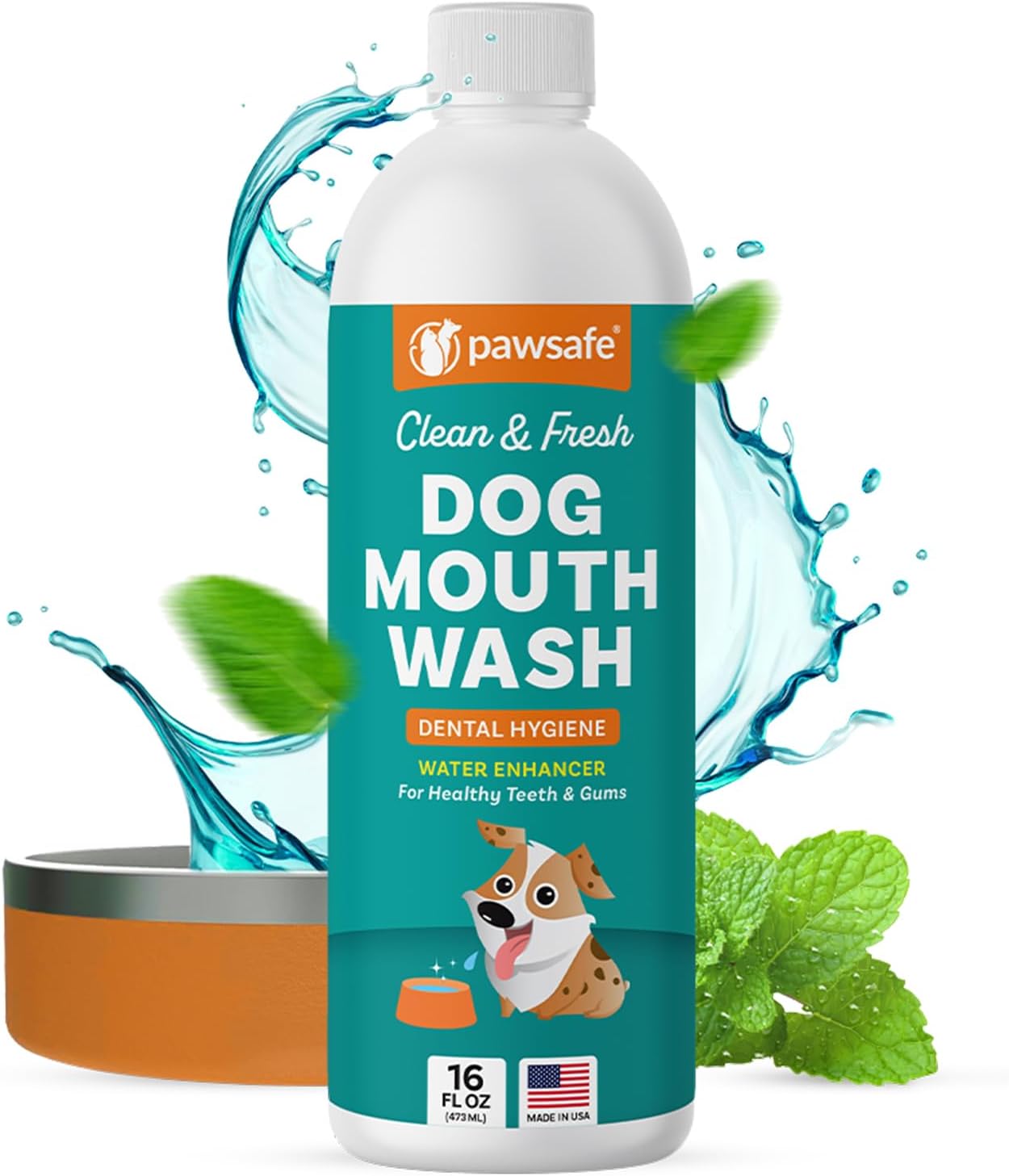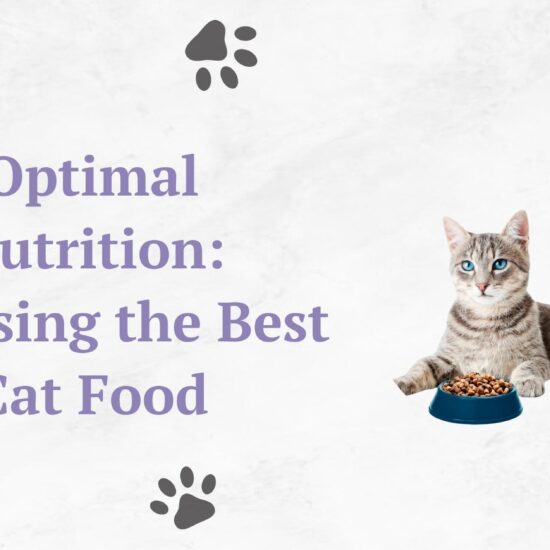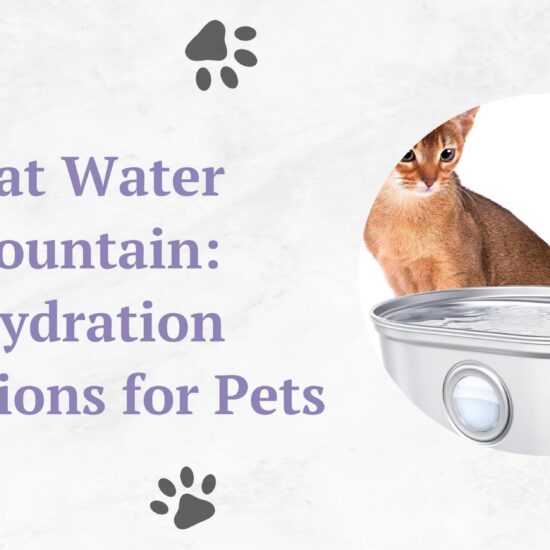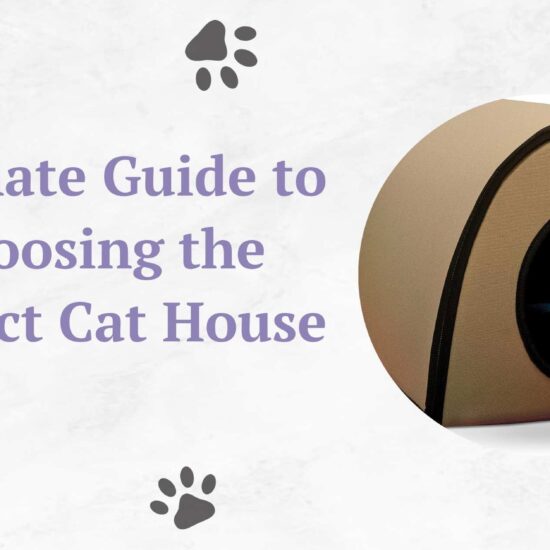Did you know that about 80% of pets show early signs of periodontal disease by three years old? This shows how important dental care for dogs is. As pet owners, we must make sure our dogs have good dental health. But, many of us forget how crucial regular dental care is for our pets’ health.
Dental care is key to preventing dental issues and improving your dog’s life. It helps avoid pain and keeps them comfortable. This guide will give you the knowledge and steps to keep your dog’s teeth clean. This way, your dog can stay happy and healthy for years to come.
Table of Contents
The Importance of Dental Care in Dogs
Good dog dental care is key for their health. Over 80% of dogs get dental disease by age three. This affects teeth, gums, and more. Bad oral health can cause tooth loss, pain, and even harm major organs.
It’s important to spot dental disease signs early. Look for bad breath, broken teeth, and eating troubles. Drooling or bleeding means serious dental issues need quick vet care. Regular dental care can prevent these problems and keep your dog healthy.
The American Animal Hospital Association [AAHA] stresses the importance of dental checks and cleanings. Start these when your dog is young, based on breed. Small dogs and cats start at one year, while big dogs start at two. These cleanings need anesthesia for a thorough job.
Daily dental care is vital for your dog’s mouth health. Use products with the Veterinary Oral Health Council seal. For small dogs or cats, dental wipes can be a good brush substitute. While dry food helps, it’s not enough to stop dental disease.
- Routine dental care prevents tooth loss and bad breath.
- Identifying signs of dental disease early can improve outcomes.
- Regular professional cleanings are essential for long-term health.
- Daily use of approved dental products supports oral hygiene.
Investing in your dog’s dental care pays off in the long run. It makes your pet happier and healthier, improving your life together.
Common Dental Problems in Dogs
Dog dental health is key to their overall health. Yet, many pet owners don’t know about common dental issues. Gum disease in dogs is a big problem, starting as gingivitis and getting worse. It can lead to tooth loss if not treated.
Dog tooth decay is another big worry. Plaque forms fast after brushing, leading to tartar if not cleaned. This can cause decay and periodontal disease. Small dogs need their first dental cleaning by two, and big dogs by three.
- Tooth fractures happen from chewing hard things like antlers or rocks.
- Malocclusions cause jaw or teeth problems, leading to pain.
- Severe tooth root abscesses need quick vet care because of bacterial infection.
Regular vet visits help catch these problems early. This helps keep dogs’ teeth healthy and prevents bigger health issues. Starting dental care early, like brushing and cleanings, lowers dental problem risks.
Teaching owners about these dental issues helps prevent them. Knowing signs like bad breath, eating trouble, and gum bleeding helps get vet care fast. This keeps dogs’ mouths healthy for life.
Understanding Periodontal Disease in Dogs
Many dogs get periodontal disease by the age of three. It starts with plaque on the gums, causing irritation and inflammation. If not treated, it can lead to pain and tooth loss.
Small breeds like Chihuahuas and Yorkshire Terriers are more at risk. Bulldogs and Pugs also face high risks due to their jaw structure. Even Greyhounds, especially those retired from racing, are more likely to get it.
Preventing periodontal disease is key. Daily brushing with dog toothpaste is crucial. Dental chews and toys can also help. Feeding a dental diet is another way to keep their teeth healthy.
Regular dental check-ups are important. They help catch problems early. Knowing signs like bad breath and swollen gums can help keep your dog’s teeth healthy.
| Dog Breed Type | Risk of Periodontal Disease |
|---|---|
| Small Breeds | High (Chihuahuas, Dachshunds) |
| Brachycephalic Breeds | High (Bulldogs, Pugs) |
| Toy Breeds | High (Toy Poodles, Maltese) |
| Retired Racing Greyhounds | Moderate to High |
| Cocker Spaniels | Moderate |
Signs of Dog Dental Problems
It’s important to know the signs of dental issues in dogs to keep them healthy. Dogs may show signs of gum disease early on. These signs can be subtle but serious if ignored.
- Bad breath
- Difficulty eating or chewing
- Pawing at the mouth
- Red or swollen gums
- Visible tartar buildup
- Excessive drooling
- Changes in chewing habits
Research shows that 80 to 89% of dogs have dental disease by age three. Seeing these symptoms means your dog might have dental problems. Owners need to watch for these signs closely.
Poor dental health can cause big problems. Untreated gum disease can lead to tooth loss. It can also cause infections and facial swelling. Regular vet visits and dental checks can help avoid these issues.
Acting early and taking care of your dog’s teeth is key. It helps prevent bigger problems later on.
How to Prevent Dog Dental Issues
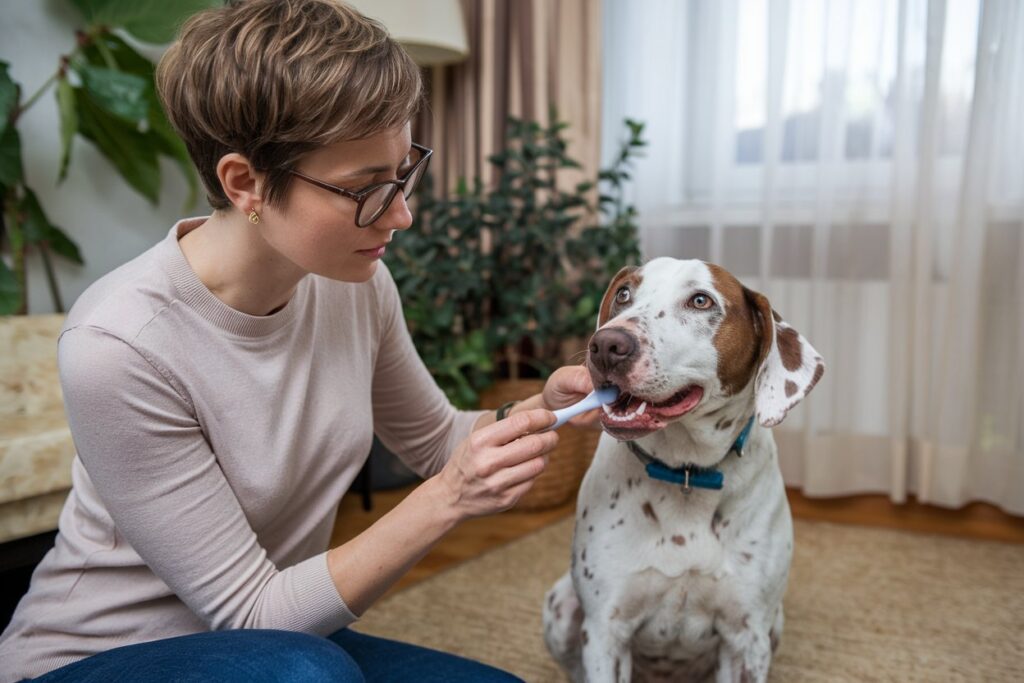
Preventive care is key for your dog’s dental health. Start by brushing their teeth daily to remove plaque. The Veterinary Oral Health Council (VOHC) recommends using dog dental care products that meet their standards. These products, along with dental chews, can help prevent periodontal disease.
Regular dental check-ups with your vet are also crucial. These visits help catch problems early, preventing chronic pain and other issues. If dental bacteria are not treated, they can harm organs like the kidneys and heart.
At-home care is vital. Here are some ways to prevent dental problems:
- Brush your dog’s teeth daily to minimize plaque buildup.
- Offer dental chews and toys to help scrape off plaque.
- Feed a nutritious diet designed for dental health.
- Ensure fresh water is available at all times.
- Schedule regular veterinary visits for professional cleanings.
Starting dental care early is important. It helps prevent tooth loss and bone loss from periodontal disease. Regular care keeps your dog’s mouth healthy and supports their overall well-being.
| Preventive Action | Frequency | Benefits |
|---|---|---|
| Brushing teeth | Daily | Removes plaque, prevents tartar buildup |
| Dental chews | Daily or as needed | Reduces tartar, promotes chewing |
| Veterinary check-ups | Every six months | Professional assessment and cleaning |
| Nutritious diet | Daily | Supports overall health and dental care |
Brushing Your Dog’s Teeth: A Step-by-Step Guide
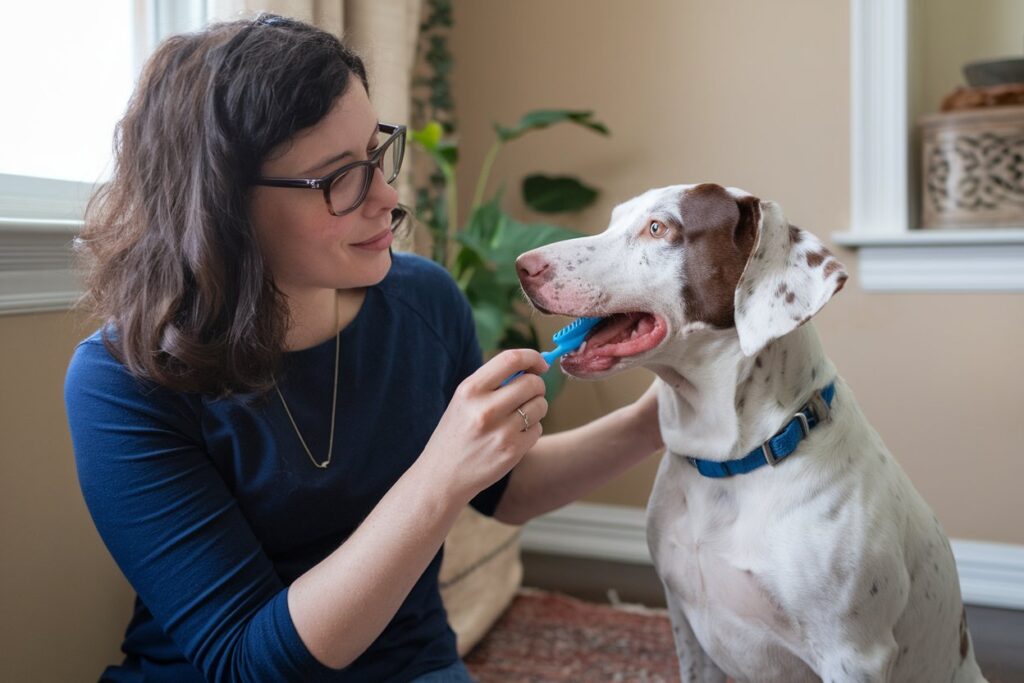
Regular brushing is key to keeping your dog’s teeth clean. It helps prevent bad breath, gum disease, and tooth decay. Follow these steps to brush your dog’s teeth effectively.
- Choose the Right Time and Place: Pick a calm spot for your dog. This makes them feel at ease while you brush.
- Introduce the Toothbrush Gradually: Let your dog get used to the toothbrush first. Do this without toothpaste to help them get familiar.
- Use Canine Toothpaste: Use toothpaste made for pets. It should taste good to them, like poultry or peanut butter. Never use toothpaste for humans.
- Start with Finger Brushes: For small dogs, a finger brush works well. Bigger dogs might need a long-handled brush.
Brushing should last two minutes. Start by applying a small amount of toothpaste. Here are some tips:
- Brush each tooth with three strokes. Hold the brush at a 45-degree angle towards the gums.
- Brush in circles for both top and bottom teeth. Do this on each side of the mouth.
- Watch for bleeding. It’s normal at first, but ongoing bleeding could mean gum disease.
Using treats or extra attention after brushing helps. Brushing daily or at least three times a week is best. Dental chews approved by the Veterinary Oral Health Council can also help.
| Tip | Details |
|---|---|
| Frequency | Brush daily for the best results; three times a week is good too. |
| Technique | Use small circles and three strokes for each tooth; aim for 2 minutes of brushing. |
| Toothbrush Type | Soft-bristle toothbrushes are best; finger brushes for small dogs. |
| Toothpaste Flavor | Use toothpaste made for dogs; avoid human toothpaste. |
| Progression | Slowly increase brushing time over 1-2 weeks; start with dry brushing. |
Thorough brushing can greatly improve your dog’s dental health. Keeping the atmosphere positive helps your dog get used to brushing. This ensures a healthier mouth and a brighter smile.
Choosing the Right Toothbrush for Dogs
Choosing the right toothbrush for dogs is key to keeping their teeth clean. There are many options out there. Think about your dog’s mouth size and how they feel about brushing.
Types of Toothbrushes for Dogs
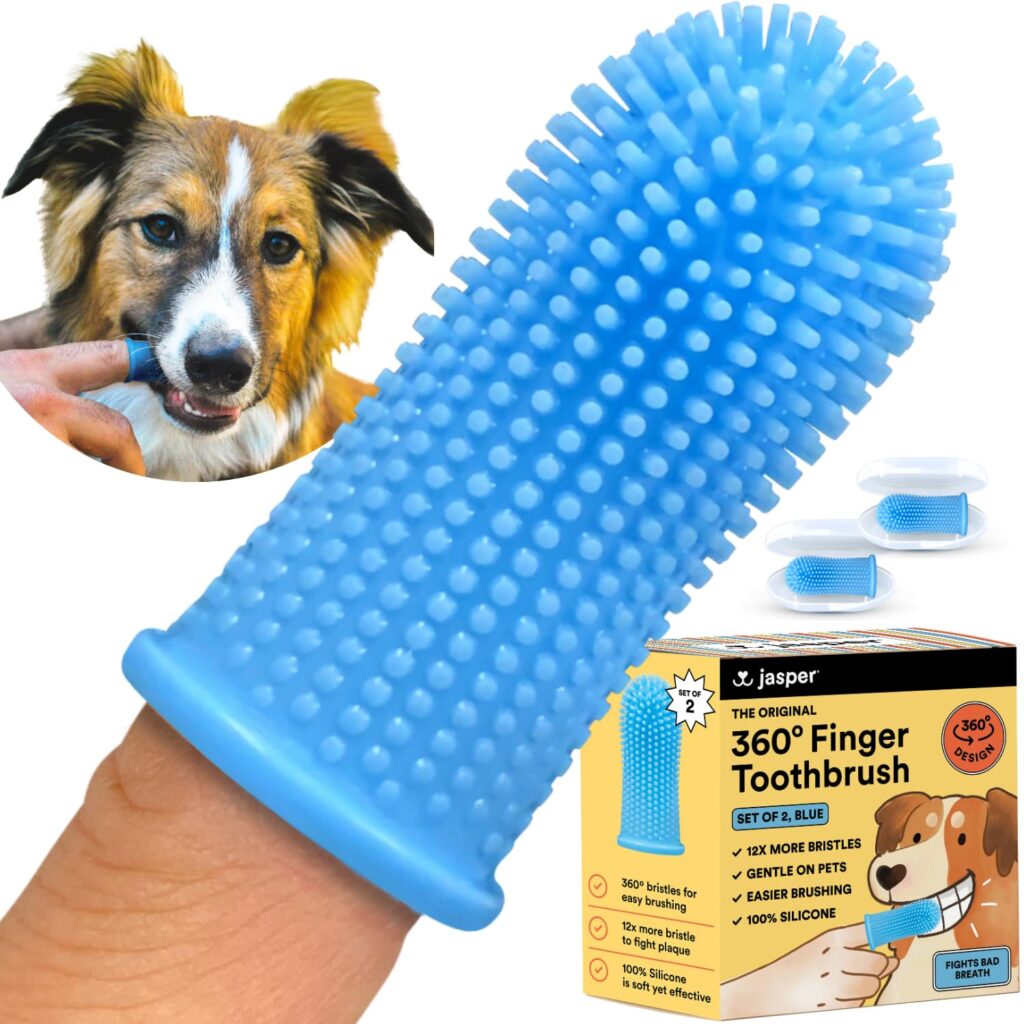
Knowing the different toothbrush types helps you pick the best one:
- Finger Brushes: Great for small mouths or dogs that get nervous. Make sure they have bristles for cleaning.
- Traditional Toothbrushes: Brands like Arm & Hammer and Petosan have good options for dogs. Double-headed brushes clean more areas at once, saving time.
- Electric Toothbrushes: The Emmi Pet Electric Dog Toothbrush uses ultrasonic tech for cleaning. It’s perfect for dogs who don’t like brushing.
- Specialty Brushes: The Petsie Toothbrush uses electrolytic tech for plaque removal. It’s quiet and doesn’t vibrate, great for sensitive dogs.
How Often Should You Brush Your Dog’s Teeth?
Brushing your dog’s teeth daily is best for their oral health. It helps prevent plaque and tartar, which can cause serious dental problems. If daily brushing is hard, aim for several times a week.
Consistency and the right toothbrush are crucial for pet teeth cleaning. Make sure the toothbrush fits your dog’s mouth well. This makes brushing more comfortable and effective.
The Role of Dog Toothpaste
Choosing the right toothpaste is key for your dog’s dental care. Unlike human toothpaste, dog toothpaste is safe for them to swallow. It fights plaque and keeps their teeth healthy. Using the right toothpaste helps prevent periodontal disease, common in dogs over three years old.
Recommended Toothpaste Brands
Look for toothpaste from trusted brands. Here are some good ones:
- Arm and Hammer: Its baking soda formula removes plaque well.
- CET (Virbac): Offers many flavors to make brushing easier.
- Vet’s Best: Uses natural ingredients for healthy gums and breath.
- Nature’s Logic: Its enzymes clean teeth safely for pets.
These brands have special toothpaste for dogs. It breaks down plaque better than regular toothpaste.
What to Avoid in Dog Toothpaste
Stay away from certain ingredients in dog toothpaste. Watch out for:
- Human toothpaste: It has xylitol or fluoride, both toxic to dogs.
- Baking soda: It can upset a dog’s stomach.
- Artificial sweeteners: They can harm a dog’s health.
Choosing the right toothpaste and avoiding harmful ingredients helps your dog’s oral health. Regular brushing keeps their mouth clean. It also lowers the risk of dental problems as they get older.
Dental Chews and Their Benefits
Dental chews for dogs are a great addition to regular oral care. They can’t replace brushing, but they help a lot. They cut down on plaque and tartar, making teeth and gums healthier. Studies show dogs who chew a lot have less plaque.
Some dental chews can even cut plaque by almost 70%.
It’s important to pick the right dental chew. Look for ones approved by the Veterinary Oral Health Council (VOHC). Only those that reduce plaque or tartar by at least 10% get the VOHC seal. Some examples include:
- Rawhide chews
- Dental bones
- Biscuits and dental diets
- Chew toys
A study found dogs eating dental chews daily had less plaque and tartar after 28 days. Owners noticed better oral smell and gum health. This shows dental chews work well.
| Type of Chew | VOHC Approval | Plaque Reduction Rate |
|---|---|---|
| Rawhide Chews | Yes | Varies |
| Dental Bones | Yes | Up to 70% |
| Dental Biscuits | Yes | 10% or more |
| Pig’s Ears | No | No benefit |
Even though dental chews are helpful, safety is key. Some chews, especially for dogs that chew a lot, can be dangerous. They might choke or get stuck if eaten too fast. So, it’s important for pet owners to watch their dogs while they chew. They should also talk to a vet to find the best dental chews for their dog.
Professional Dog Dental Care: What to Expect
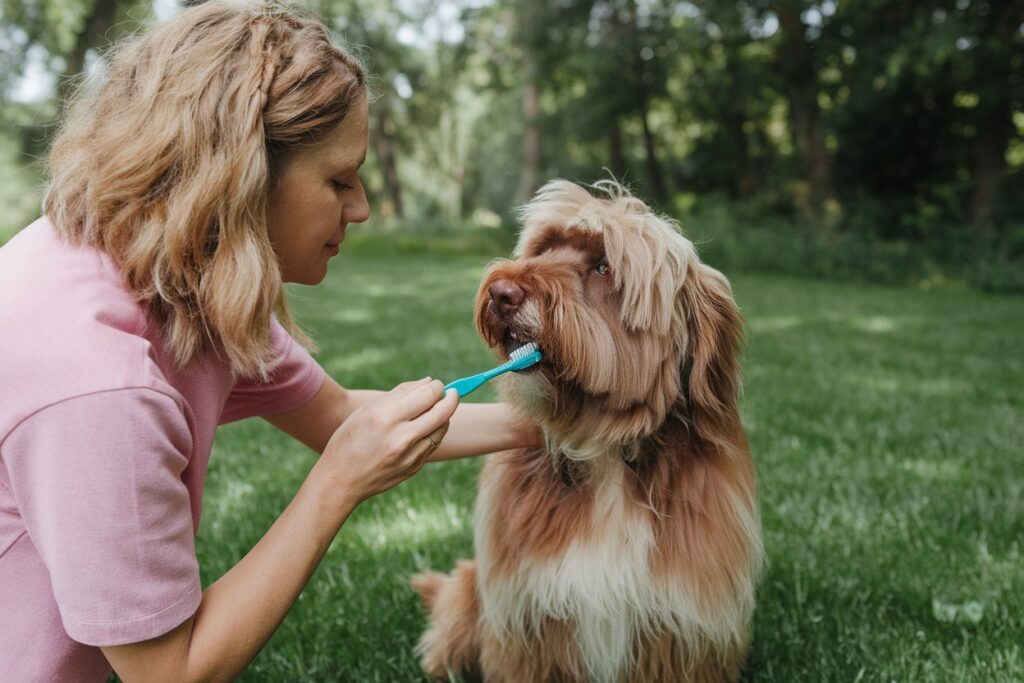
Regular vet visits are key to keeping your dog’s teeth and gums healthy. Professional cleanings check your dog’s dental health and spot problems early. These visits include exams, cleanings under anesthesia, and X-rays to find hidden issues.
The Importance of Regular Vet Check-ups
Regular vet visits are vital for your dog’s health. They help catch dental problems early. During these visits, your vet will check your dog’s teeth, clean them, and might take X-rays.
Here’s what happens during a vet visit:
- Anesthesia use: Makes the cleaning safe and stress-free for your dog.
- Blood and urine tests: Check your dog’s health before the cleaning.
- Post-procedure care: Your vet will tell you how to care for your dog at home.
Here’s what you can expect at a dental care visit:
| Procedure | Details |
|---|---|
| Pre-Procedure Preparation | Blood and urine tests, possible dietary restrictions. |
| Anesthesia Administration | Ensures comfort and safety during the cleaning process. |
| Cleaning and Examination | Thorough scaling and polishing to remove plaque and tartar. |
| Post-Procedure Recovery | Monitoring of vital signs; administration of pain medication if needed. |
| Follow-up Care | Instructions for at-home dental care and scheduling of recheck if necessary. |
Regular dental care visits can make your dog live longer and healthier. Work with your vet to make a dental care plan. This plan should include vet visits and home care.
At-Home Dental Care Products
Keeping your dog’s teeth clean at home is key. You can use mouthwash for dogs and enzymatic toothpaste. Both are great for a good dental care routine.
Mouthwash for Dogs: Is It Effective?
Mouthwash for dogs is a helpful tool in oral care. It has ingredients like Chlorhexidine and Vitamin C to fight bacteria and freshen breath. But, it’s not a replacement for brushing teeth twice a day.
If you’re thinking about using mouthwash, talk to your vet first. They can make sure it’s right for your dog.
Enzymatic Toothpaste for Dogs
Enzymatic toothpaste is great for your dog’s teeth and gums. It breaks down plaque and helps keep teeth healthy. There are many flavors and brands to choose from.
Using it regularly, along with brushing, can prevent dental problems. If your dog already has dental issues, see a vet before starting any new products.
| Product Type | Key Ingredients | Benefits |
|---|---|---|
| Mouthwash for Dogs | Chlorhexidine, Zinc Gluconate, Vitamin C | Controls bacteria, freshens breath |
| Enzymatic Toothpaste | Various Enzymes | Promotes gum health, reduces plaque |
| Dental Wipes | Non-toxic Cleaning Agents | Removes bacteria, convenient for quick clean-ups |
| Dental Chews | Varied Ingredients | Helps decrease plaque buildup, promotes safe chewing |
Dog Mouthwash
Virbac CET Enzymatic Toothpaste
HICC PET Teeth Cleaning Wipes for Dogs
Greenies dental sticks
The Best Practices for Caring for Your Dog’s Teeth
Caring for your dog’s teeth is a daily task. It’s important to brush their teeth regularly. This helps prevent dental problems and keeps their breath fresh.
Use a toothbrush and toothpaste made for dogs. Human products can harm them.
Dental treats are also key in dog dental care. They help clean teeth and control plaque. Chewing on the right toys can also clean teeth naturally.
It’s crucial to check your dog’s teeth with a vet regularly. Vets can spot dental problems early and clean teeth better than you can at home. Most dogs show signs of dental disease by three years old.
The right diet is also important for dental health. Some dog foods and dental chews can help control plaque and tartar. Make sure your dog has safe things to chew on and avoid hard items that can hurt their teeth.
| Best Practices for Dental Care in Dogs | Description |
|---|---|
| Regular Brushing | Brush daily with dog-specific products to prevent plaque accumulation and bad breath. |
| Dental Treats | Use treats designed to help clean teeth and reduce plaque buildup. |
| Veterinary Check-Ups | Schedule regular visits for professional cleanings and assessments of dental health. |
| Safe Chewing Materials | Provide appropriate toys and avoid hard items that can cause tooth fractures. |
| Special Diets | Consider special formula dry foods or dental chews for improved dental hygiene. |
By following these tips, you can greatly improve your dog’s dental health. Early care and regular check-ups are key to preventing dental disease. This ensures your dog lives a happy and healthy life.
Understanding Dog Gum Disease
Gum disease in dogs, especially periodontal disease, comes from not cleaning plaque off teeth. This causes the gums to swell and smell bad. If ignored, it can lead to serious pain and even tooth loss.
Research shows that 80-90% of dogs over three years old have periodontal disease. Small breeds are more at risk, and the problem gets worse with age. Knowing the signs early is key to treating it.
- Pawing or rubbing at the mouth
- Drooling
- Decreased appetite and changes in eating habits
- Mouth odor
- Bleeding from the mouth
- Reluctance to chew
- Aggressive behavior
Plaque, not tartar, is the main cause of periodontal disease in dogs. To prevent it, owners need to brush their dog’s teeth daily. Use toothpaste made for dogs to fight plaque.
Dealing with gum disease in dogs is more than just about their teeth. It can lead to serious health problems like liver and heart disease. Ignoring it can let harmful bacteria into the blood, causing more health issues.
| Condition | Impact | Preventive Measures |
|---|---|---|
| Gingivitis | Swollen gums, bad breath | Daily brushing, professional dental cleanings |
| Periodontal Disease | Pain, tooth loss, links to systemic disease | Regular vet visits, plaque control, training for owners |
Not treating gum disease in dogs can mean expensive treatments. So, it’s important to take care of their teeth at home and see the vet regularly. This keeps their teeth and overall health in top shape.
When to Seek Veterinary Dental Services
It’s important to know when to take your dog to the vet for dental issues. Bad breath that doesn’t get better with home care is a sign. If your dog has trouble eating or chewing, it could mean they’re in pain.
Visible swelling around the mouth is another red flag. It means your dog needs help fast.
Dogs usually need their first dental cleaning when they’re 2-3 years old. Regular vet visits are key. Vets say dogs need annual cleanings, with bigger dogs needing one and smaller ones needing two.
Ignoring signs to see a veterinarian can lead to big problems. Dental diseases can affect one in three dogs by age three. These diseases can cause tooth abscesses and pain, even leading to blood infections.
Professional dog dental vet services include x-rays and anesthesia. This helps vets find hidden problems. After a cleaning, dogs usually recover quickly and can get back to normal in hours.
To keep your dog’s mouth healthy, brush their teeth regularly. Catching dental issues early means your dog can live a happy, healthy life.
The Benefits of Routine Dental Cleaning
Routine dental cleaning is key to your dog’s health. With over 48 million households in the United States having dogs, it’s vital. Regular cleanings stop dental diseases like gingivitis and periodontal disease, which hit 86.3% of dogs.
By getting regular cleanings, you reduce the risk of your dog losing teeth. Dogs often hide dental pain, so regular checkups are crucial. Bacteria from plaque can harm vital organs like the heart and kidneys.
It’s wise to schedule an annual dental visit. But, some dogs might need more frequent check-ups. This early detection saves money and avoids expensive treatments. Daily brushing, plaque prevention products, and dental chews also boost your dog’s dental health.
- Prevention of gum disease and tooth decay
- Reduction of bad breath
- Improved overall interaction with your pet
- Prolonged lifespan through enhanced health
Investing in dental care means fresher breath and fewer painful infections. It makes your dog happier and healthier. Good dental health is essential for their overall well-being.
Essential Dental Care in Dogs: A Lifelong Commitment
Taking care of your dog’s dental health is a big responsibility. It’s not something you do once and forget. Dogs often start showing signs of dental problems by age three. So, it’s key to start lifelong dental care for dogs early.
Ignoring your dog’s dental health can cause serious problems. These problems can affect their heart, liver, and kidneys. It’s crucial to keep their teeth clean to avoid these issues.
Watch for signs of dental problems in your dog. Look for bad breath, broken teeth, and trouble eating. Regular vet visits, cleanings, and x-rays are important for their dental health.
Choose a vet like Bayside Animal Hospital that follows the American Veterinary Medical Association (AVMA®) standards. This ensures your dog gets the best care.
Good oral health is linked to a better life for dogs. A good dental care plan can prevent many dental problems. This helps your dog live a longer, healthier life.
By making dental care a priority, you help your dog stay happy and active. This commitment ensures your dog has a fulfilling life for many years.
FAQ
Why is dental care in dogs important?
Dental care is key for dogs to avoid gum disease, tooth decay, and bad breath. It makes their life better by reducing pain and improving health.
How can I tell if my dog has dental issues?
Look for bad breath, trouble eating, and drooling. Also, check for red gums and tartar. If you see these signs, see your vet.
What are the best practices for caring for my dog’s teeth?
Start a routine with brushing, dental chews, and vet visits. Pick products your vet recommends for best results.
How often should I brush my dog’s teeth?
Brush daily, but a few times a week is okay. Being consistent is important for good dental care.
What type of toothbrush should I use for my dog?
Choose a toothbrush that fits your dog’s mouth. Finger brushes, dog toothbrushes, and electric brushes work well. Make sure it’s comfortable for them.
Is dog toothpaste different from human toothpaste?
Yes, dog toothpaste is safe for them to swallow. Human toothpaste is not. Use brands like Arm and Hammer or CET for your dog.
Can dental chews replace brushing my dog’s teeth?
Dental chews help but don’t replace brushing. They’re best used together to keep your dog’s teeth clean.
How often should my dog have professional dental cleanings?
How often depends on your dog’s health and breed. Talk to your vet for the best schedule. Annual cleanings are usually a good start.
What are the signs of gum disease in dogs?
Watch for swollen gums, bad breath, and bleeding. Gum disease can lead to tooth loss and pain. Regular cleanings and care at home can prevent it.
What at-home dental care products can help maintain my dog’s oral hygiene?
Products like mouthwash, toothpaste, and dental treats help. Always ask your vet for the best options for your dog.



